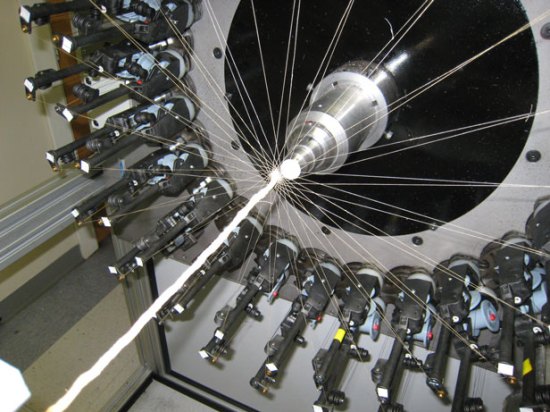Researchers Weave Blood Vessels Out Of Strips Of Human Flesh
Damaged blood vessels are about as fun as they sound, and they tend to come part in parcel with other problems. Dialysis patients for example, who already have problems with their kidneys, get hit with the double whammy that dialysis is pretty rough on the blood vessels in the arm. Granted, the benefit is greater than the cost, but doing damage is never good. One possible solution to the problem would be replacing the damaged blood vessels with fresh, new ones. But how do you get those? If current research pays off, you get them by weaving them out of strips of artificially-grown human flesh. It’s as awesome as it is gory.
Cytograft has been working on this pursuit for a while, and they’ve made some pretty big advances. We’re still a far cry from widespread blood vessel transplants, but we’re headed in that direction. Originally, the idea was to take huge sheets of what is essentially lab-grown flesh and roll it into tubes. The problem that presented itself there was that the tubes needed to be fused shut somehow, to prevent leakage. The solution to this problem, it seems, is to take a whole different approach entirely and slice those sheets of flesh into strands, and then robotically weave dozens of these strands into a tube by wrapping them around a spindle. For science.
So far, Cytograft is doing pre-clinical testing in dogs and have found that the artifical vessels are quite robust and free of leaks. To boot, they typically aren’t rejected by the recipient since the woven tubes are made of cellular material but not the actual donor cells. Thanks to that, the implanted vessels generally aren’t seen as a threat by the patient’s nervous system.
The hope for the future is that this process can be perfected to the extent where hospitals could conceivably have “spare blood vessels” on hand somewhere. So far, Cytograft’s product is proving to be effective with no need to be personalized for the recipient in any way; these fake vessels would work just as well for me as they would for you. The main challenge now, aside from clinical testing, is coming up with a better way to grow the flesh, preferably into fibers that could be used right away. Somewhere, someone is thinking really, really hard about the best way to grow flesh. Though I guess if it’s for the good of sick people everywhere, maybe that’s okay.
(Technology Review via Discover)
- This German company is looking into 3D printing blood vessels
- Heart-powered artificial lung
- Puppy with 4 prosthetic legs
Have a tip we should know? tips@themarysue.com
